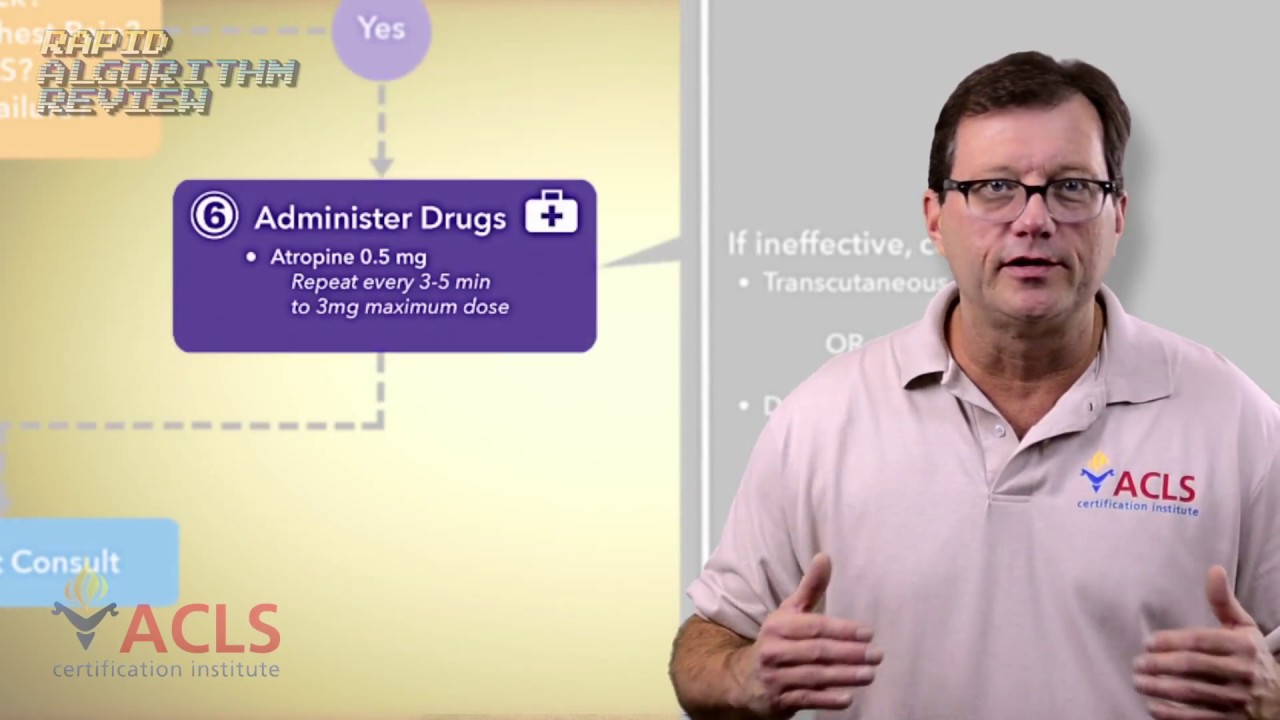
- Assess clinical condition. Perform an assessment for a clinical condition. A heart rate less than 50 beats per minute is more likely to be symptomatic.
- Identify and treat underlying cause. Maintain the airway and give the patient oxygen if indicated. Place the patient on cardiac monitors to identify the rhythm and monitor blood pressure and oxygen saturation. Next, obtain a 12-lead ECG and establish IV access.It’s important to determine whether the bradycardia is causing the patient’s symptoms or if some other illness is causing the bradycardia. Treat any underlying cause.
- Is persistent bradyarrhythmia causing symptoms? Decide if the persistent bradyarrhythmia is causing signs or symptoms due to poor perfusion, such as hypotension, an altered mental state, shock, chest discomfort, or acute heart failure.
- No. Monitor and observe. If the patient has adequate perfusion, monitor and observe.
- Yes. Administer drug treatment. If the patient has poor perfusion, administer .5 milligrams of atropine through the IV every 3 to 5 minutes until a maximum of 3 milligrams have been given. If the atropine is ineffective, implement transcutaneous pacing or administer a dopamine infusion of 2 to 20 micrograms per kilogram per minute or an epinephrine infusion of 2 to 10 micrograms per minute. Titrate to the patient’s response.
- Other considerations. Consult an expert for further diagnosis and treatment, and consider transvenous pacing.
Recommended Articles

Symptomatic Bradycardia Causes and Treatment
The determination on whether or not treatment is necessary for bradycardic events is generally based on the presence of symptoms. The clinical manifestations of bradycardia can vary widely from insidious symptoms to episodes of frank syncope.




